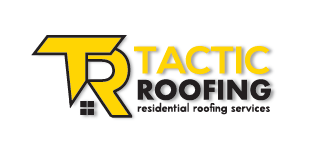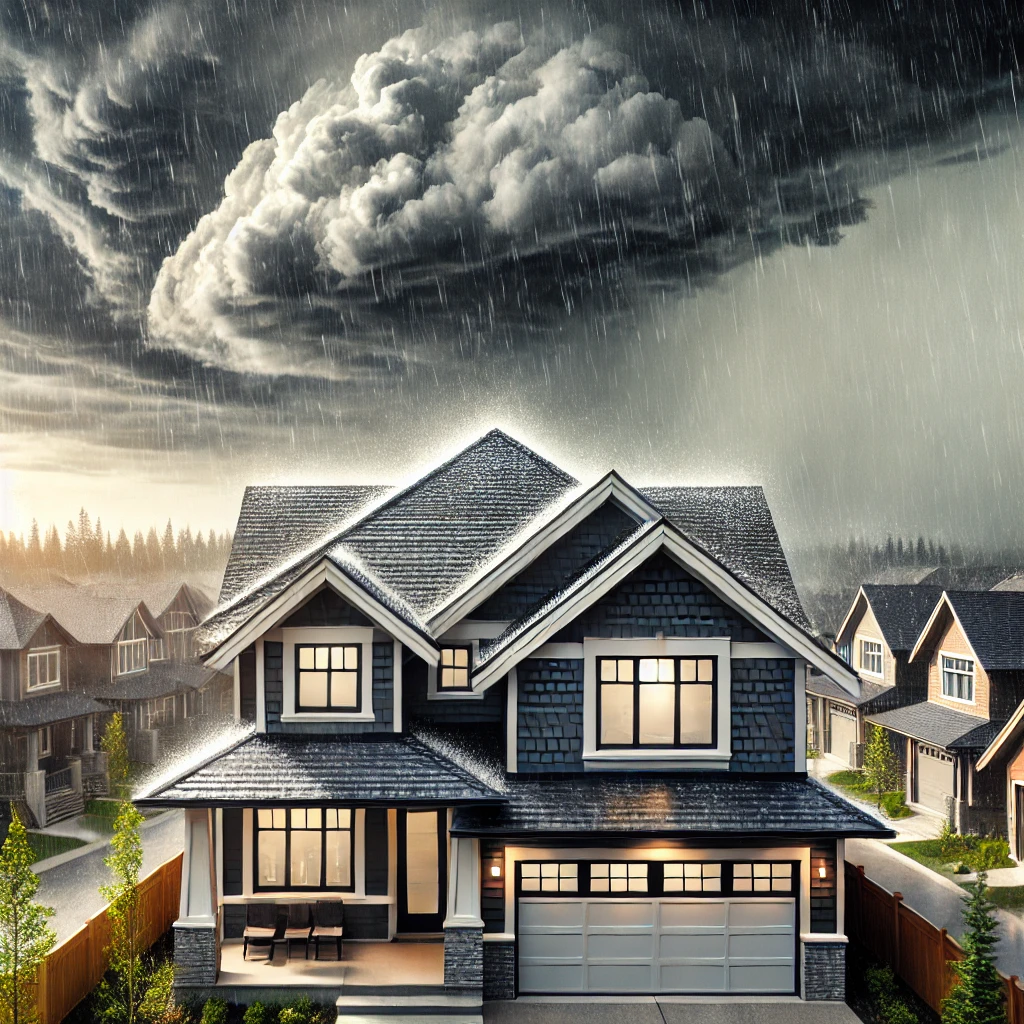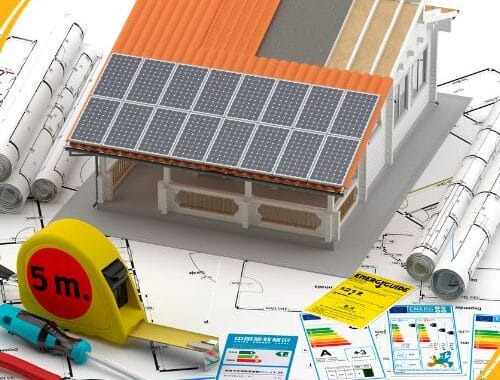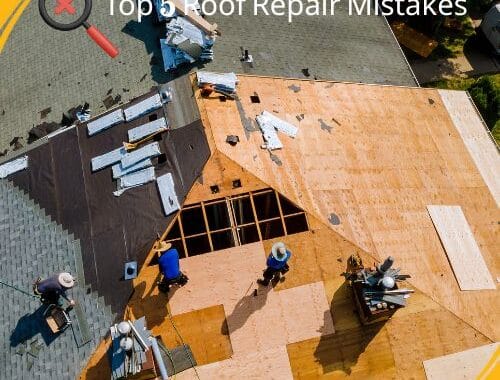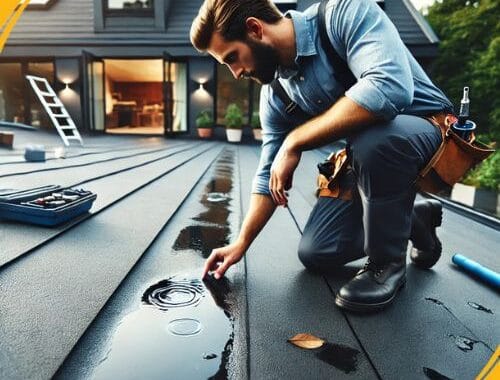Canada’s unpredictable weather, particularly in hail-prone regions, poses a serious threat to roofs. Hailstorms can cause significant damage, leading to costly repairs and even premature roof replacements. Choosing the right roofing material is crucial for long-term durability and protection. Homeowners must invest in impact-resistant materials that can withstand severe hailstorms while maintaining aesthetic appeal and energy efficiency. In this article, we will explore the best roofing materials for hail-prone areas, their longevity, and how they perform under extreme weather conditions. We will also discuss essential factors such as roofing material lifespan, storm damage roof repair, and roof repair during winter to help homeowners make informed decisions.
The Impact of Hail on Roofing
Hailstorms can cause extensive damage to roofs, ranging from minor dents to severe structural issues. The size and velocity of hailstones determine the level of damage. Some common issues caused by hail include:
- Cracked or broken shingles
- Granule loss from asphalt shingles
- Dents in metal roofing
- Punctures in flat roofing materials
- Weakened roof structure due to repeated hail exposure
To minimize the risk of damage, choosing the right roofing material is critical. Let’s examine the best options for hail-prone regions in Canada.
Best Roofing Materials for Hail-Prone Areas
1. Impact-Resistant Asphalt Shingles (Class 4-Rated)
Asphalt shingles are one of the most popular roofing choices due to their affordability and ease of installation. However, standard asphalt shingles may not withstand hailstorms. Class 4 impact-resistant shingles are designed with a reinforced structure that helps absorb the impact of hail without cracking. These shingles offer:
- High durability and resistance to storm damage
- A lifespan of 30–50 years
- Affordable pricing compared to other materials
- Availability in various colors and styles
2. Metal Roofing
Metal roofs are among the most durable options for hail-prone areas. They are highly resistant to impact, fire, and harsh weather conditions. Features of metal roofing include:
- Exceptional durability with a lifespan of 40–70 years
- Ability to withstand hailstones without severe dents
- Energy efficiency, reflecting heat to reduce cooling costs
- Low maintenance requirements
While metal roofs may develop minor cosmetic dents from hail, they rarely suffer from structural damage, making them a top choice for homeowners in storm-prone regions.
3. Synthetic Slate Roofing
Synthetic slate is designed to replicate the appearance of natural slate but with enhanced durability and impact resistance. It is an excellent alternative for homeowners who want a high-end aesthetic without the fragility of real slate. Key benefits include:
- High resistance to hail and extreme weather
- Lightweight structure, reducing strain on the home’s foundation
- Longevity of 50+ years
- Low maintenance requirements
4. Rubber Roofing
Rubber roofing, particularly EPDM (Ethylene Propylene Diene Monomer), is a flexible and impact-resistant material commonly used in flat or low-slope roofing systems. Advantages of rubber roofing include:
- Superior impact absorption, minimizing hail damage
- Lifespan of 40–50 years
- Resistance to cracking in extreme temperatures
- Environmentally friendly and recyclable materials
Storm Damage Roof Repair: What to Do After a Hailstorm
Even the most durable roofing materials can sustain damage in a severe hailstorm. If your roof has been affected, follow these steps to minimize further damage and ensure prompt repairs:
- Inspect Your Roof: Look for visible signs of damage, such as dents, cracks, or missing shingles.
- Check for Leaks: Interior water stains or drips indicate that hail may have compromised your roof’s integrity.
- Document the Damage: Take photos of any visible issues to support insurance claims.
- Contact a Professional Roofing Company: Hiring an expert for a thorough inspection is crucial to identifying hidden damage.
- Schedule Roof Repairs: Prompt repairs prevent small issues from escalating into costly problems.
Roof Repair During Winter: Unique Challenges & Solutions
Hailstorms often occur in colder months, making roof repair during winter particularly challenging. Some common issues homeowners face include:
- Freezing temperatures affecting sealants and adhesives
- Snow and ice accumulation delaying repair work
- Increased risk of accidents due to slippery surfaces
Despite these challenges, professional roofing companies like Tactic Roofing have the expertise and equipment to perform winter roof repairs efficiently. Key strategies include:
- Using cold-weather adhesives and materials designed for low temperatures
- Implementing heated roofing solutions to prevent ice buildup
- Scheduling emergency repairs to address urgent issues before further damage occurs
The Importance of Choosing a Trusted Roofing Contractor
Selecting a reputable roofing company is essential to ensure high-quality installation and repairs. A professional contractor will:
- Conduct thorough inspections to assess roof conditions
- Recommend the best materials based on regional weather patterns
- Offer warranties and insurance for added protection
- Provide expert craftsmanship for long-lasting results
Conclusion
Homeowners in hail-prone areas of Canada must invest in durable and impact-resistant roofing materials to protect their property. Options like Class 4-rated asphalt shingles, metal roofing, synthetic slate, and rubber roofing provide superior resistance to hail damage while ensuring longevity. Regular inspections, timely storm damage roof repair, and proper roof repair during winter are crucial to maintaining a strong and reliable roof. By partnering with a trusted company like Tactic Roofing, homeowners can confidently navigate Canada’s unpredictable weather while safeguarding their homes for years to come.
